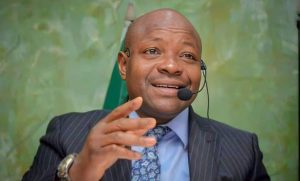FIFA will only allow natural grass fields at 2023 Women’s WC


FIFA will only allow natural grass fields at the 2023 Women’s World Cup.
The stipulation is contained in requirements sent to bidding nations and follows controversy over the use of artificial turf at the 2015 tournament in Canada.
Some players launched a gender discrimination case —which was later withdrawn — over FIFA’s use of turf four years ago because men’s World Cup games have always been on grass. They claimed the artificial surface is less forgiving than grass and impacts the game because of concerns over injury. They also claimed balls travel and bounce differently on artificial turf. FIFA said it wanted the same surface in every stadium.
This year’s 24-team tournament in France will not have any artificial pitches at the nine venues. FIFA has made it clear such surfaces won’t be acceptable in 2023, either. What is permitted is the hybrid system used at many leading stadiums where millions of synthetic grass fibers are woven in between and beneath the natural grass.
“The pitch shall feature a natural grass playing surface,” FIFA’s bidding requirements state. “Hybrid-grass systems are considered natural grass according to FIFA’s requirements and hybrid reinforcement should be considered for stadium pitches.”
FIFA also is asking bidders to ensure that each training ground has at least one grass field.
There is record interest in hosting the 2023 tournament, with nine countries having expressed their intent to bid.
The most intriguing bid is by South Korea, which wants to combine with North Korea. But FIFA now includes an evaluation on human rights and worker conditions when assessing Women’s World Cup bidders, just like the new requirements for prospective hosts of the men’s tournament. That could prove problematic for North Korea, which would also have to provide visas in a “non-discriminatory manner” while currently being one of the most closed countries in the world.
From Asia, there also is interest in hosting from Australia and Japan. There are three potential bidders from South America: Argentina, Bolivia, Brazil and Colombia. New Zealand and South Africa are also pursuing becoming candidates ahead of the April 16 deadline to register a bid. FIFA set an Oct. 4 deadline to submit bid books.
The 37-member FIFA Council will pick the host in March next year after inspectors produce bid evaluation reports.
The bidding document also states that the opening game and final must be played in venues with at least 55,000 seats. For other games up to the quarterfinals, 20,000 seats are required. The semifinals must be played in 35,000-capacity venues.
In the technical evaluation, five aspects of infrastructure will be given grades between zero and five: stadiums, team and referee facilities, accommodation, the international broadcast center site and other competition-related sites. There’s also a score on commercial matters, including revenue and costs projections.
“The scores received may have a bearing on whether or not the bid is eligible for consideration by, or presentation to, the FIFA Council,” the bidding documents state. “FIFA reserves the right to deem the bid ineligible on the basis that a bid does not achieve the minimum scores” of 2.0 for the overall mark, or stadiums, accommodation and facilities for teams and referees.








